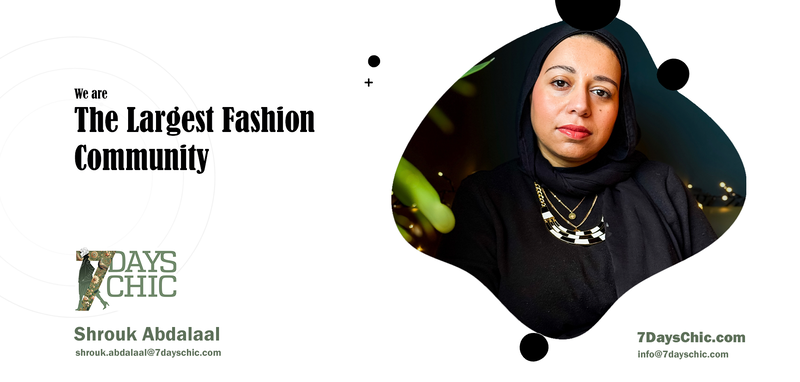Biodegradable Fabrics: Innovations in Eco-textiles
Biodegradable fabrics are revolutionizing sustainable fashion by offering materials that decompose naturally without leaving harmful residues. These innovations address fashion’s environmental impact by reducing waste, pollution, and dependency on synthetic, non-degradable materials.
1. Key Innovations in Biodegradable Fabrics
Biodegradable fabrics are a crucial innovation in sustainable fashion, offering an eco-friendly alternative to synthetic textiles that take decades to decompose. These materials break down naturally in the environment without leaving harmful residues, reducing landfill waste and pollution.
- Plant-Based Fabrics: These fabrics come from renewable, organic sources and decompose under natural conditions.
- Organic Cotton:
- Grown without synthetic pesticides or fertilizers, it decomposes within months when composted.
- Used by brands focusing on eco-friendly casual wear and basics.
- Hemp:
- Highly durable and decomposes naturally in soil.
- Requires minimal water and no pesticides, making it one of the most sustainable fibers.
- Linen (Flax):
- Made from flax plants, linen is biodegradable, breathable, and long-lasting.
- Popular in high-end sustainable collections for its luxurious texture.
- Organic Cotton:
- Bioengineered Fabrics: Innovative processes create fabrics from lab-grown or unconventional natural sources.
- Mycelium Leather (Mushroom-Based):
- Developed as an alternative to animal leather, it decomposes fully and offers a similar texture.
- Used by brands like Stella McCartney for cruelty-free, sustainable designs.
- Orange Fiber:
- Made from citrus juice by-products, this fabric is soft, silky, and biodegradable.
- Mycelium Leather (Mushroom-Based):
- Protein-Based Fabrics: Derived from natural proteins like silk or wool, these materials break down quickly without harming the environment.
- Silk:
- A naturally biodegradable fabric, especially in its raw or unprocessed form.
- Sustainable silk farming (e.g., peace silk) offers cruelty-free options.
- Wool:
- Fully biodegradable and compostable, wool also provides excellent insulation and durability.
- Recycled wool reduces waste and extends its lifecycle.
- Favored by luxury brands for eco-conscious collections.
- Pineapple Leather (Pinatex):
- Created from pineapple leaf fibers, offering a biodegradable and vegan alternative to leather.
- Embraced by designers focused on ethical accessories and footwear.
- Silk:
- Biodegradable Synthetics: Recent innovations in synthetic fabrics focus on creating materials that decompose like natural fibers.
- Biodegradable Polyester:
- Engineered to break down under specific composting conditions, reducing plastic pollution.
- Used in outdoor and performance wear to balance durability and sustainability.
- Polyhydroxyalkanoates (PHA):
- A bioplastic derived from microorganisms, PHA decomposes in marine and soil environments.
- Emerging as a sustainable option for fashion and packaging.
- Biodegradable Polyester:
2. Benefits of Biodegradable Fabrics
- Waste Reduction: Significantly decreases landfill accumulation and microplastic pollution.
- Eco-Friendly Disposal: Natural decomposition returns nutrients to the soil, promoting a circular lifecycle.
- Versatility: Biodegradable fabrics can mimic various textures, from soft cotton to sleek leather.
3. Challenges
- Cost and Scalability: Biodegradable textiles often have higher production costs and limited availability.
- Durability Concerns: Some biodegradable fabrics may lack the longevity of traditional synthetics.
- Infrastructure for Composting: Proper decomposition requires access to composting facilities or specific conditions.
Biodegradable fabrics represent the future of eco-textiles, offering innovative solutions to reduce fashion’s environmental footprint. As technology advances and consumer demand for sustainable options grows, these materials will play a pivotal role in reshaping the industry toward a more eco-conscious and responsible future.
Alternatives to Leather
The traditional leather industry has significant environmental and ethical concerns, including animal cruelty, high water usage, and toxic chemical treatments. Innovative alternatives are now transforming the market by offering cruelty-free and eco-friendly options without compromising quality or aesthetics.
1. Pineapple Leather (Pinatex)
- What It Is:
- Made from the fibers of pineapple leaves, Piñatex is a sustainable byproduct of the pineapple industry.
- Developed by Dr. Carmen Hijosa, it provides a plant-based alternative to animal leather.
- Features:
- Durable, lightweight, and breathable.
- Available in a range of textures and colors.
- Suitable for fashion, upholstery, and accessories.
- Sustainability Benefits:
- Utilizes agricultural waste, reducing landfill waste and the need for additional resources.
- Minimal water usage and no harmful chemicals in production.
- Brands Using Pinatex:
- Hugo Boss: Vegan sneakers.
- Luxtra: Sustainable handbags.
- Altiir: Jackets and apparel.
2. Mushroom Leather (Mycelium Leather)
- What It Is:
- Made from mycelium, the root structure of fungi, mushroom leather mimics the texture and appearance of traditional leather.
- Produced in controlled lab environments, making it highly customizable.
- Features:
- Soft, flexible, and durable.
- Can be grown in various thicknesses and finishes to suit different applications.
- Fully biodegradable under natural conditions.
- Sustainability Benefits:
- Rapid production cycle (days or weeks vs. years for animal leather).
- Requires minimal water, land, and energy.
- No harmful tanning or dyeing processes.
- Brands Using Mushroom Leather:
- Stella McCartney: Mylo leather bags and garments.
- Bolt Threads: Collaborations with Adidas and Lululemon.
- Hermès: Victoria bag featuring Sylvania, a mushroom-based material.
3. Lab-Grown Leather (Cultured Leather)
- What It Is:
- Lab-grown leather is bioengineered from animal cells, producing material structurally identical to traditional leather but without the need to harm animals.
- Companies like Modern Meadow and VitroLabs are at the forefront of this technology.
- Features:
- Offers the same look, feel, and durability as conventional leather.
- Fully customizable in terms of texture, thickness, and color.
- Free from imperfections like scars or wrinkles found in animal hides.
- Sustainability Benefits:
- Reduces environmental impact associated with livestock farming, including greenhouse gas emissions, water use, and deforestation.
- No chemical tanning processes are required.
- Brands Using Lab-Grown Leather:
- Ecovative: Partnerships with major fashion houses for lab-grown materials.
- Reishi: Collaborations with brands for sustainable, premium leather goods.
4. Challenges and Future Prospects
- Scalability: Many alternatives face challenges in meeting mass-market demand.
- Cost: Production can be expensive due to limited infrastructure and new technology.
- Consumer Awareness: Educating consumers about the benefits and durability of these materials is key to widespread adoption.
Leather alternatives like Piñatex, mushroom leather, and lab-grown leather are paving the way for a more sustainable and ethical fashion industry. By embracing these materials, designers and brands can reduce their environmental footprint while offering innovative, high-quality products that align with modern consumer values. As technology advances, these alternatives will likely become mainstream, redefining the future of luxury and sustainability.
4. Eco-Friendly Fashion Practices
The rise of eco-conscious consumerism has spotlighted ethical production and fair trade in the fashion industry. These practices prioritize workers’ rights, sustainable processes, and transparent supply chains, offering a more responsible alternative to exploitative and environmentally harmful production methods.
Ethical Production and Fair Trade
Ethical production and fair trade are fundamental aspects of sustainable fashion, ensuring that workers are treated with dignity and that environmental and social standards are upheld throughout the supply chain.
1. What is Ethical Production?
Ethical production encompasses practices that ensure fair treatment of workers, minimize environmental impact, and uphold humane standards throughout the supply chain.
Key Principles:
- Fair Wages: Paying workers a living wage that covers basic needs like food, housing, and education.
- Safe Working Conditions: Providing a safe, healthy, and harassment-free workplace.
- No Exploitation: Prohibiting forced labor, child labor, and excessive working hours.
- Environmental Responsibility: Using sustainable materials and minimizing waste, pollution, and energy consumption.
2. Fair Trade in Fashion
Fair trade is a certification system that ensures ethical standards in the sourcing and production of goods, benefiting small-scale producers and artisans.
Key Elements of Fair Trade Fashion:
- Empowering Artisans: Supporting small producers and communities, often in developing countries.
- Transparent Pricing: Ensuring producers receive a fair share of profits.
- Sustainable Sourcing: Using organic or eco-friendly materials that protect the environment and biodiversity.
- Community Development: Investing in education, healthcare, and infrastructure in producer communities.
- Fair Trade Certifications:
- Fair Trade Certified
- WFTO (World Fair Trade Organization)
- GOTS (Global Organic Textile Standard)
3. Examples of Ethical and Fair Trade Practices in Fashion
- Patagonia: Pioneering transparency in its supply chain, Patagonia ensures fair labor practices and environmental stewardship at every step.
- People Tree: A leader in fair trade fashion, partnering with artisans and farmers to produce sustainable, handmade clothing.
- Everlane: Known for its “Radical Transparency” model, providing detailed information about production costs and factory conditions.
Benefits of Ethical Production and Fair Trade
- For Workers: Improves quality of life, provides financial stability, and ensures dignity in labor.
- For the Environment: Reduces pollution, promotes sustainable farming, and minimizes the carbon footprint of fashion production.
- For Consumers: Offers high-quality, sustainable products with a clear conscience.
- For Brands: Builds trust and loyalty, aligning with the values of socially-conscious consumers.
5. Challenges in Implementing Ethical Practices
- Higher Costs: Ethical production and fair trade often involve higher costs due to better wages, safer working conditions, and sustainable materials.
- Complex Supply Chains: Ensuring transparency and accountability in every link of the supply chain can be difficult.
- Consumer Awareness: Many consumers are still unaware of the impact of fast fashion, requiring education and advocacy to drive demand for ethical products.
6. Future of Ethical Fashion
With growing consumer demand for sustainability and accountability, ethical production and fair trade practices are becoming essential for brands. Technological advancements like blockchain can enhance supply chain transparency, while collaborations with non-profits and fair trade organizations can ensure continued progress toward a more just and sustainable fashion industry.
Reducing Water and Energy Usage in Manufacturing
The fashion industry is one of the largest consumers of natural resources, with high water and energy usage contributing significantly to its environmental impact. Implementing sustainable practices in manufacturing can drastically reduce this footprint, promoting a more eco-friendly industry.
1. The Environmental Impact of Water and Energy Usage
- Water Consumption: Fashion production is highly water-intensive, especially in processes like cotton farming, dyeing, and finishing. For example, it takes approximately 2,700 liters of water to produce a single cotton T-shirt.
- Energy Usage: The industry heavily relies on fossil fuels for powering textile mills, machinery, and transport. This contributes to high carbon emissions, making fashion a major contributor to climate change.
2. Strategies for Reducing Water Usage
- Waterless Dyeing Technologies:
- Innovative methods like CO₂ dyeing eliminate water use by using pressurized carbon dioxide instead of water.
- Digital printing reduces water consumption by applying dye directly onto fabric without excessive washing.
- Closed-Loop Water Systems:
- Factories can implement systems that recycle and purify water used during dyeing and finishing processes, significantly reducing freshwater usage.
- Sustainable Cotton Alternatives:
- Using organic cotton, hemp, or recycled fibers reduces water consumption compared to conventional cotton farming, which relies heavily on irrigation.
3. Strategies for Reducing Energy Usage
- Energy-Efficient Machinery:
- Upgrading to modern, energy-efficient equipment can cut energy consumption in textile mills and production lines.
- Renewable Energy Sources:
- Solar and wind energy can power factories, reducing reliance on fossil fuels.
- Brands like H&M and Burberry have committed to using 100% renewable energy in their operations.
- Low-Temperature Processing:
- Innovations in fabric processing enable dyeing and finishing at lower temperatures, which requires less energy.
- Optimized Production Scheduling:
- Streamlining production schedules and logistics minimizes idle times for machines, reducing unnecessary energy use.
4. Brands Leading the Way in Resource Conservation
- Levi’s:
- Their Water<Less initiative has saved over 3.5 billion liters of water by redesigning the finishing process and promoting recycled water usage.
- Adidas:
- The company uses DryDye technology, which eliminates the need for water in dyeing fabrics.
- Patagonia:
- Patagonia prioritizes low-impact processing and renewable energy sources in their factories to minimize water and energy consumption.
5. Benefits of Reducing Water and Energy Usage
- Environmental Impact:
- Reduces water scarcity and pollution from untreated wastewater.
- Cuts greenhouse gas emissions and mitigates climate change.
- Cost Savings:
- Lower resource usage reduces operational costs in the long term.
- Consumer Appeal:
- Eco-conscious consumers increasingly favor brands with sustainable production practices, enhancing brand reputation and loyalty.
6. Challenges and Future Outlook.
- High Initial Costs:
- Implementing water- and energy-efficient technologies can require significant upfront investment.
- Scaling Innovations:
- Widespread adoption of sustainable practices requires collaboration between governments, brands, and suppliers.
- Future Potential:
- Continued advancements in technology, like AI-driven resource optimization and blockchain for supply chain transparency, promise to further reduce water and energy usage in manufacturing.
Zero-Waste Design Techniques in Fashion
Zero-waste design is a sustainable approach to fashion that eliminates fabric waste during the production process. By maximizing fabric usage and minimizing offcuts, designers contribute to reducing the estimated 92 million tons of textile waste generated globally each year. This practice aligns with the broader goals of sustainable fashion and promotes environmental stewardship.
1. The Importance of Zero-Waste Design
- Environmental Impact:
- Traditional garment production wastes approximately 15-20% of fabric. Zero-waste techniques prevent this waste from ending up in landfills, reducing the industry’s ecological footprint.
- Cost Efficiency:
- By utilizing all fabric, zero-waste design lowers material costs and optimizes resources.
- Creative Innovation:
- Designing within the constraints of zero waste often leads to unique, innovative garment construction and aesthetics.
2. Key Zero-Waste Design Techniques
- Pattern Efficiency:
- Designing patterns that interlock or fit together like a puzzle maximizes fabric use.
- Draping and Folding:
- Incorporating fabric draping or folding into the design avoids cutting unnecessary pieces, preserving the full fabric’s integrity.
- Seamless Garment Construction:
- Knitting or weaving garments directly to shape (e.g., 3D knitting) eliminates the need for cutting and stitching.
- Modular Design:
- Creating garments from modular pieces allows for efficient fabric use and easier customization or repairs.
- Cut-and-Stitch Innovations:
- Some designers use cutting techniques that result in leftover fabric pieces being repurposed into accessories or additional garments.
3. Examples of Zero-Waste Fashion Designers
- Timo Rissanen: A pioneer in zero-waste design, Rissanen creates garments that use 100% of the fabric without any scraps.
- Holly McQuillan: Known for her innovative zero-waste pattern techniques, McQuillan integrates sustainability with avant-garde design.
- Daniel Silverstein (Zero Waste Daniel): Specializes in using leftover fabric scraps to create bold, patchwork-style garments.
4. Benefits of Zero-Waste Design
- Reduces Textile Waste:
- Helps combat the significant waste problem in the fashion industry.
- Promotes Sustainability:
- Contributes to circular fashion by encouraging responsible use of materials.
- Encourages Creative Problem-Solving:
- Designers often develop groundbreaking techniques to work within zero-waste constraints.
5. Challenges of Zero-Waste Design
- Technical Complexity:
- Designing zero-waste patterns requires advanced technical skills and planning.
- Time-Intensive:
- Developing interlocking or seamless patterns can take longer than conventional methods.
- Limited Scalability:
- Scaling zero-waste designs for mass production can be challenging, particularly for complex patterns.
6. The Future of Zero-Waste Fashion
- Digital Pattern-Making:
- Advanced software tools can help designers optimize fabric use and test zero-waste patterns virtually.
- Consumer Demand:
- As awareness grows, consumers increasingly seek out sustainable and zero-waste fashion options.
- Educational Integration:
- Fashion schools are beginning to teach zero-waste techniques as part of their curricula, preparing future designers to adopt sustainable practices.
Digital Fashion: The Rise of Virtual Clothing
The digital fashion revolution is transforming the industry by introducing clothing that exists solely in virtual environments. As technology advances and the metaverse expands, virtual clothing offers a sustainable, creative, and inclusive alternative to traditional fashion.
1. What is Digital Fashion?
Digital fashion refers to clothing designed using 3D software and computer-generated imagery (CGI). These garments exist only in digital form, worn by avatars in virtual spaces or superimposed onto photos and videos of real people.
2. The Appeal of Virtual Clothing
Sustainability: Virtual clothing eliminates waste, water, and energy associated with physical production, addressing environmental concerns in the fashion industry.
Cost-Effectiveness: Creating digital outfits is more affordable for consumers who want to experiment with high-end designs without buying physical pieces.
Creative Freedom: Designers can create garments that defy the laws of physics, using fantastical materials and structures that are impossible to achieve in real life.
Inclusivity: Virtual fashion allows users to express their style without limitations related to size, gender, or physical availability of the garments.
3. Applications of Digital Fashion
Social Media and Content Creation: Digital outfits are popular among influencers and content creators, providing visually striking looks without the need for physical clothing.
Gaming and Metaverse: Virtual fashion is integral to platforms like Decentraland, Roblox, and Fortnite, where users purchase outfits for their avatars.
NFTs and Blockchain: Designers sell unique digital clothing as non-fungible tokens (NFTs), offering ownership of exclusive virtual pieces.
Augmented Reality (AR) Try-Ons: Brands use AR technology to let consumers “try on” virtual garments before purchasing physical versions.
4. Notable Players in Digital Fashion
The Fabricant:
A pioneering digital fashion house, creating entirely virtual collections and collaborating with major brands like Adidas and Tommy Hilfiger.
DressX:
An online platform offering a wide range of digital clothing that users can wear in photos or on social media.
Balenciaga:
A leader in merging high fashion with digital spaces, Balenciaga has collaborated with video games like Fortnite to introduce virtual collections.
5. Benefits of Digital Fashion
Environmental Impact:
Reduces the carbon footprint and waste associated with traditional fashion.
Endless Creativity:
Allows designers to explore new ideas without production constraints.
Accessibility:
Consumers worldwide can access and experience luxury fashion in a virtual format.
6. Challenges of Digital Fashion
Adoption Hurdles:
Many consumers are unfamiliar with virtual clothing and may hesitate to invest in non-physical items.
Technology Barriers:
High-quality digital fashion requires advanced software and skills, potentially limiting widespread production.
Intellectual Property Concerns:
Protecting designs in a digital landscape poses legal and ethical challenges.
7. The Future of Digital Fashion
Integration with AI:
Artificial intelligence will likely play a key role in personalizing digital wardrobes and predicting trends.
Expansion of the Metaverse:
As virtual worlds grow, the demand for digital fashion will continue to rise.
Sustainability as a Standard:
With increasing environmental awareness, digital fashion may become a mainstream alternative to fast fashion.
5. Brands Leading the Way in Sustainable Fashion
Top Eco-Friendly Fashion Brands and What Makes Them Stand Out
The fashion industry has seen a surge in eco-conscious brands that prioritize sustainability, ethical production, and innovative materials. Here’s a look at some of the top eco-friendly fashion brands and what sets them apart:
1. Stella McCartney
- A pioneer in sustainable luxury fashion, Stella McCartney has committed to using cruelty-free and vegan materials from the start.
- Incorporates innovative fabrics like Mylo (mushroom leather) and ECONYL (recycled nylon).
- Advocates for transparency in the supply chain and uses renewable energy in production.
2. Patagonia
- Known for its commitment to environmental activism, Patagonia uses organic cotton, recycled materials, and Fair Trade-certified sewing.
- Encourages customers to repair and recycle their gear through the Worn Wear program.
- Donates 1% of annual sales to environmental causes and supports grassroots environmental initiatives.
- Everlane
- Focuses on “radical transparency,” providing detailed information about the factories, costs, and environmental impact of each product.
- Uses sustainable fabrics like organic cotton and recycled polyester in its collections.
- Committed to eliminating virgin plastics from its supply chain.
- Eileen Fisher
- Champions circular fashion with its Renew program, which repairs and resells pre-worn garments.
- Uses sustainable fabrics like organic linen, Tencel, and recycled wool.
- Dedicated to reducing water and chemical usage in the dyeing process.
- Reformation
- Combines chic, trendy designs with sustainable practices, using eco-friendly materials like deadstock fabrics and recycled textiles.
- Operates on a carbon-neutral model by offsetting emissions from production and shipping.
- Publishes sustainability reports to maintain transparency and educate consumers.
- Veja
- Known for its stylish, sustainable sneakers made from organic cotton, wild rubber, and recycled materials.
- Sources raw materials ethically, supporting local farmers in the Amazon rainforest.
- Operates with a transparent and socially responsible supply chain.
- Pangaia
- Innovates with sustainable materials like FLWRDWN (a down alternative made from flowers) and seaweed-based fabrics.
- Uses natural dyes and ensures that all packaging is biodegradable or recyclable.
- Partners with organizations to support biodiversity and combat climate change.
- Tentree
- Plants ten trees for every product sold, aiming to plant one billion trees by 2030.
- Uses sustainable fabrics like Tencel, organic cotton, and recycled polyester.
- Designs timeless, minimalist pieces that prioritize longevity over trends.
9. Key Features of Eco-Friendly Brands
Eco-friendly brands prioritize sustainability and ethical responsibility in every aspect of their operations. These brands focus on:
- Sustainable Materials: Focus on organic, recycled, and innovative fabrics.
- Ethical Production: Fair wages, safe working conditions, and transparent supply chains.
- Environmental Responsibility: Carbon-neutral or negative practices, reduced water usage, and waste minimization.
- Longevity and Circularity: Durable designs, repair programs, and initiatives like upcycling and recycling.
These brands prove that sustainability and style can go hand in hand, paving the way for a more eco-conscious fashion industry.
Continue Reading:
Written by Shrouk Abdalaal




Add a Comment